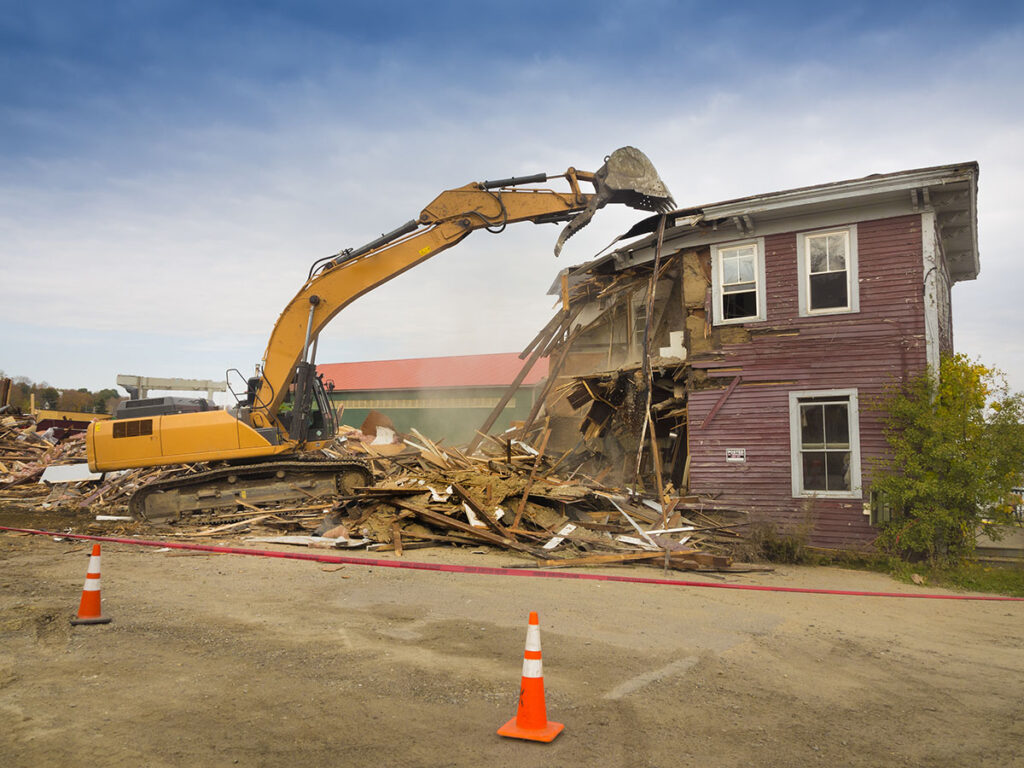Historical Use of Asbestos in Plumbing
Asbestos was widely used in plumbing materials from the 1920s to the 1980s. It was valued for its heat resistance and durability. Many plumbing products, such as:
- Pipe insulation
- Cement pipes
- Adhesives
were made with asbestos. This made plumbing safer at the time, but it also created long-term health risks for workers.
Common Plumbing Materials Containing Asbestos
Plumbers often encounter various materials that may contain asbestos, including:
- Asbestos cement used in pipes and toilets
- Insulation around pipes and boilers
- Gaskets and valves in older plumbing systems
These materials can release harmful fibers when disturbed, posing a risk to those who work with them.
Why Asbestos Was Popular in Plumbing
Asbestos was popular in plumbing for several reasons:
- Heat Resistance: It can withstand high temperatures, making it ideal for hot water systems.
- Durability: Asbestos products are long-lasting, reducing the need for frequent repairs.
- Cost-Effectiveness: It was cheaper to use than many other materials available at the time.
Despite its benefits, the dangers of asbestos exposure have led to stricter regulations and a decline in its use. However, many older buildings still contain asbestos, making it crucial for plumbers to be aware of its presence and risks.
Health Risks Associated with Asbestos in Plumbing
Mesothelioma and Other Diseases
Plumbers are at a high risk of developing serious health issues due to asbestos exposure. The most notable disease linked to asbestos is mesothelioma, a rare and aggressive cancer that primarily affects the lungs. Other diseases associated with asbestos include:
- Lung cancer: A common result of prolonged exposure to asbestos fibers.
- Asbestosis: A chronic lung disease caused by inhaling asbestos fibers, leading to scarring of lung tissue.
- Ovarian and laryngeal cancer: These cancers have also been linked to asbestos exposure.
How Asbestos Fibers Affect Health
When plumbers work with older materials, they may disturb asbestos-containing products, releasing tiny fibers into the air. Once inhaled, these fibers can:
- Cause inflammation: This can lead to chronic respiratory issues.
- Trigger cellular changes: Over time, these changes can result in cancer.
- Remain in the body: Asbestos fibers can stay in the lungs for many years, increasing the risk of developing diseases later in life.
Long-term Health Monitoring for Plumbers
Given the risks associated with asbestos exposure, it is crucial for plumbers to undergo regular health check-ups. Monitoring can help in early detection of any asbestos-related diseases. Recommended practices include:
- Annual lung function tests: To assess respiratory health.
- Regular chest X-rays: To identify any abnormalities in the lungs.
- Consultation with specialists: Plumbers should seek advice from healthcare professionals familiar with asbestos-related conditions.
Legal Framework for Asbestos Exposure Claims
Understanding Asbestos Lawsuits
Asbestos lawsuits are legal actions taken by individuals who have been harmed by asbestos exposure. These lawsuits can be filed against:
- Manufacturers of asbestos-containing products.
- Employers who failed to protect workers from exposure.
- Property owners who did not disclose the presence of asbestos.
To win a lawsuit, the affected person must prove that their illness was caused by asbestos exposure and that the responsible party was negligent.
Role of Asbestos Trust Funds
Many companies that produced asbestos products have set up trust funds to compensate victims. These funds are designed to:
- Provide financial support to those affected by asbestos-related diseases.
- Ensure that victims can receive compensation even if the company has gone bankrupt.
- Streamline the claims process for quicker payouts to victims.
Statute of Limitations for Claims
Each state has a time limit, known as the statute of limitations, for filing asbestos claims. Key points include:
- The time limit can vary from one to several years, depending on the state.
- It usually starts from the date of diagnosis or when the victim became aware of their illness.
- Missing the deadline can result in losing the right to file a claim, so it is crucial to act promptly.
Identifying Asbestos in Plumbing Systems
Signs of Asbestos in Plumbing
Identifying asbestos in plumbing systems can be crucial for safety. Here are some signs that may indicate the presence of asbestos:
- Old Materials: Plumbing materials installed before the 1980s are more likely to contain asbestos.
- Insulation: If there is insulation around pipes, especially if it looks old and crumbly, it may contain asbestos.
- Cement Products: Asbestos cement was commonly used in pipes and fittings. Look for any cement-like materials that are deteriorating.
Testing for Asbestos in Older Buildings
If there are suspicions about asbestos in plumbing, testing is essential. Here’s how to go about it:
- Hire a Professional: Always consult a certified asbestos inspector to conduct tests.
- Sample Collection: The inspector will take samples of suspected materials for laboratory analysis.
- Lab Results: Wait for the lab to confirm whether asbestos is present in the samples.
Professional Asbestos Inspection Services
For safety and accuracy, it’s best to use professional services. Here’s what to expect:
- Expertise: Professionals have the training to identify and handle asbestos safely.
- Comprehensive Assessment: They will check all areas of the plumbing system for potential asbestos.
- Safety Protocols: They follow strict safety guidelines to protect themselves and others during inspections.
Safety Measures for Plumbers Handling Asbestos
Protective Equipment for Asbestos Work
Plumbers must wear the right protective gear when working with asbestos. This includes:
- Respirators: To filter out harmful asbestos fibers from the air.
- Coveralls: To prevent asbestos dust from sticking to clothing.
- Gloves: To protect hands from direct contact with asbestos materials.
Safe Work Practices to Minimize Exposure
To keep safe while working, plumbers should follow these important practices:
- Avoid disturbing asbestos: If possible, leave asbestos materials undisturbed.
- Wet methods: Use water to dampen materials before cutting or removing them. This helps keep fibers from becoming airborne.
- Proper disposal: Always dispose of asbestos waste according to local regulations to prevent contamination.
Training and Certification for Asbestos Handling
Plumbers should receive proper training to handle asbestos safely. This includes:
- Understanding risks: Knowing the dangers of asbestos exposure.
- Learning safe removal techniques: Training on how to safely remove and dispose of asbestos materials.
- Certification programs: Completing accredited courses to ensure compliance with safety standards.
Compensation for Asbestos-Related Health Issues
Types of Compensation Available
Plumbers who have been diagnosed with asbestos-related diseases may be eligible for various forms of compensation. Here are some common types:
- Lawsuit Settlements: Victims can file lawsuits against companies responsible for their exposure to asbestos. Successful cases may result in financial settlements.
- Asbestos Trust Claims: Many companies that used asbestos have set up trust funds to compensate victims. Plumbers can file claims against these trusts for financial help.
- Workers’ Compensation: If the exposure occurred at work, plumbers might qualify for workers’ compensation benefits to cover medical expenses and lost wages.
Filing a Claim for Asbestos Exposure
The process of filing a claim can be complex, but it generally involves the following steps:
- Gather Evidence: Collect medical records, employment history, and any documentation proving asbestos exposure.
- Consult an Attorney: Seek legal advice from a lawyer who specializes in asbestos cases to understand your rights and options.
- File the Claim: Submit the claim to the appropriate court or asbestos trust, ensuring all deadlines are met.
Examples of Successful Asbestos Lawsuits
Several notable cases highlight the potential for compensation:
- A plumber received $2.07 million after being diagnosed with pleural mesothelioma.
- Another case resulted in a $13.4 million settlement for a 55-year-old plumber.
- A 64-year-old pipefitter was awarded $5.4 million for his asbestos-related illness.
These examples show that compensation can significantly help those affected by asbestos-related health issues.
Impact of Asbestos Regulations on Plumbing Industry
Asbestos regulations have significantly changed the plumbing industry over the years. These changes aim to protect workers and the public from the dangers of asbestos exposure. Here are some key points regarding the impact of these regulations:
EPA Regulations on Asbestos Use
- The Environmental Protection Agency (EPA) has implemented rules to limit the use of asbestos in various products, including plumbing materials.
- In 2024, the EPA issued a final rule banning ongoing uses of chrysotile asbestos, which was commonly used in plumbing.
- Despite these regulations, many older buildings still contain asbestos, posing risks to plumbers who work on them.
Changes in Plumbing Practices Due to Asbestos
- Plumbers now follow stricter safety protocols to minimize exposure to asbestos when working in older buildings.
- Many plumbing companies have adopted new practices, such as using asbestos-free materials whenever possible.
- Training programs have been established to educate plumbers about the risks of asbestos and safe handling practices.
Challenges in Enforcing Asbestos Regulations
- Enforcement of asbestos regulations can be difficult, especially in older buildings where asbestos may still be present.
- Many plumbers may unknowingly encounter asbestos while working, leading to potential health risks.
- There is a need for ongoing education and awareness to ensure that all plumbing professionals understand the importance of these regulations and how to comply with them.
Asbestos Removal and Abatement in Plumbing
Steps in Safe Asbestos Removal
- Assessment: Before any removal, a thorough inspection of the plumbing system is necessary to identify all asbestos-containing materials.
- Preparation: The work area should be sealed off to prevent asbestos fibers from spreading. This includes using plastic sheeting and ensuring proper ventilation.
- Removal: Trained professionals should carefully remove asbestos materials, using specialized tools and techniques to minimize dust and fiber release.
Hiring Certified Asbestos Abatement Professionals
- Qualifications: Always check that the abatement team is certified and has experience in handling asbestos safely.
- Insurance: Ensure that the professionals have liability insurance to cover any accidents or damages during the removal process.
- References: Ask for references or reviews from previous clients to gauge the quality of their work.
Cost and Time Considerations for Abatement
- Cost Factors: The total cost can vary based on the amount of asbestos, the complexity of the job, and the location of the plumbing system.
- Time Frame: Depending on the extent of the asbestos, removal can take anywhere from a few hours to several days.
- Post-Removal Testing: After the removal, it’s essential to conduct air quality tests to ensure that no asbestos fibers remain in the environment.
Support Resources for Affected Plumbers
Legal Assistance for Asbestos Victims
Plumbers who have been exposed to asbestos may need legal help to seek compensation. Here are some resources:
- Asbestos Attorneys: Specialized lawyers can guide victims through the legal process and help them file claims.
- Legal Aid Organizations: Non-profit groups may offer free or low-cost legal services to those affected by asbestos exposure.
- Veterans’ Benefits: Plumbers who served in the military may qualify for additional support and compensation.
Medical Support for Asbestos-Related Diseases
Health care is crucial for plumbers suffering from asbestos-related illnesses. Consider these options:
- Regular Check-ups: Plumbers should have regular medical exams to monitor their health and catch any issues early.
- Specialized Clinics: Some hospitals have programs specifically for treating asbestos-related diseases like mesothelioma. Some clinics offer new and cutting edge treatments for mesothelioma so it is worth checking into.
- Support Groups: Joining a support group can provide emotional help and connect affected individuals with others facing similar challenges.
Community Support Groups for Plumbers
Community resources can offer both emotional and practical support:
- Local Organizations: Many communities have groups that focus on helping workers affected by asbestos.
- Online Forums: Websites and social media groups can provide a platform for sharing experiences and advice.
- Workshops and Seminars: Educational events can help plumbers learn about their rights and available resources.
Case Studies of Asbestos Exposure in Plumbing
Notable Lawsuits and Settlements
Several significant lawsuits have highlighted the dangers of asbestos exposure in the plumbing industry. Some key cases include:
- John Doe vs. ABC Plumbing Co.: This case involved a plumber who developed mesothelioma after years of working with asbestos-containing materials. The court awarded him a substantial settlement due to negligence in providing a safe working environment.
- Jane Smith vs. XYZ Contractors: A former pipefitter sued her employer for failing to inform workers about the risks of asbestos. The jury ruled in her favor, emphasizing the need for proper safety measures.
- State vs. Asbestos Manufacturers: This landmark case led to a multi-million dollar settlement for affected workers, pushing for stricter regulations on asbestos use in plumbing.
Personal Stories of Affected Plumbers
Many plumbers have shared their experiences with asbestos exposure, shedding light on the personal impact of this issue:
- Mike’s Story: After decades of working in older buildings, Mike was diagnosed with asbestosis. He now advocates for better safety practices in the industry.
- Linda’s Journey: Linda, a retired plumber, discovered she had lung cancer linked to her work with asbestos. She emphasizes the importance of awareness and testing for those in the trade.
- Tom’s Experience: Tom lost a close friend to mesothelioma, which he believes was caused by their shared work environment. He now speaks out about the risks of asbestos in plumbing.
Lessons Learned from Past Exposures
The experiences of these individuals and the outcomes of lawsuits have led to important lessons:
- Awareness is Key: Understanding the risks associated with asbestos can help prevent exposure.
- Proper Training: Plumbers should receive training on how to handle asbestos safely.
- Advocacy for Change: Victims of asbestos exposure have pushed for stricter regulations and better safety measures in the plumbing industry.











